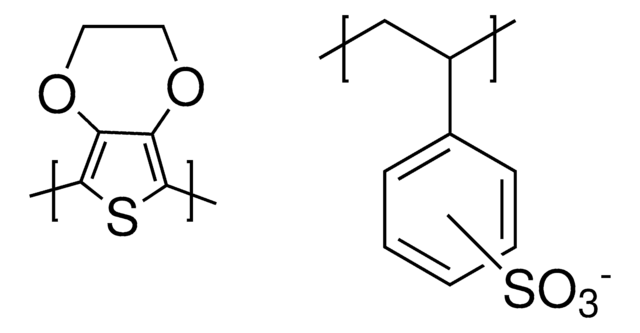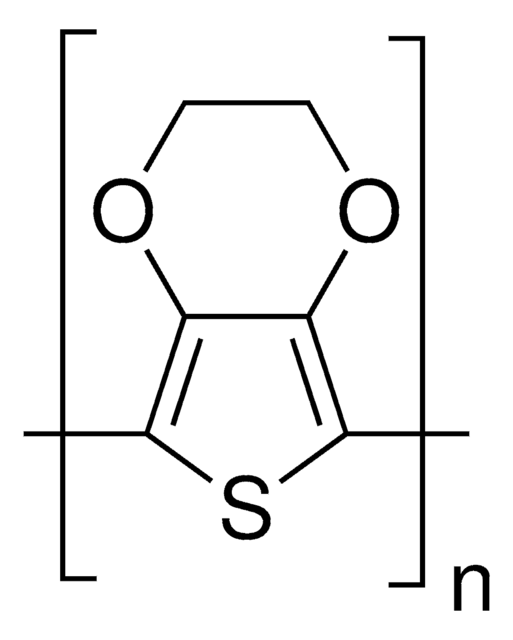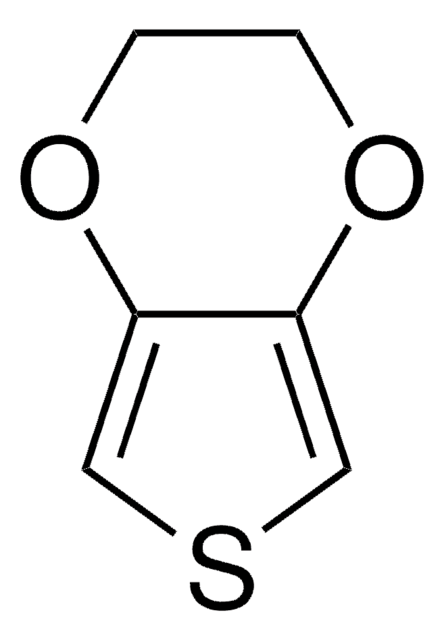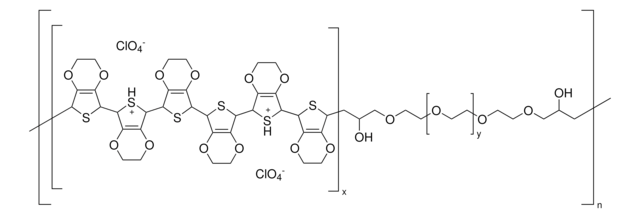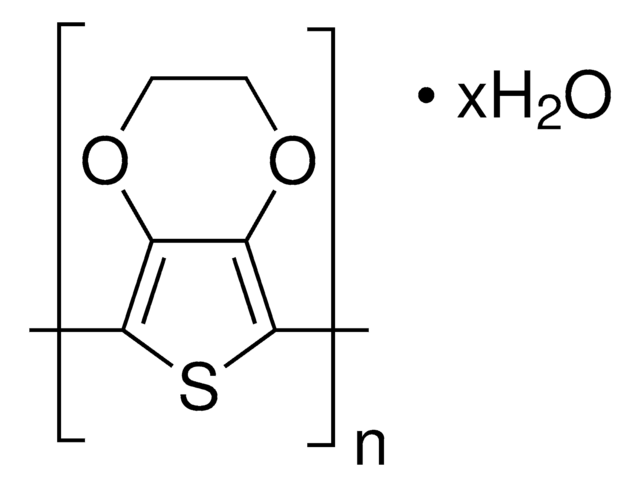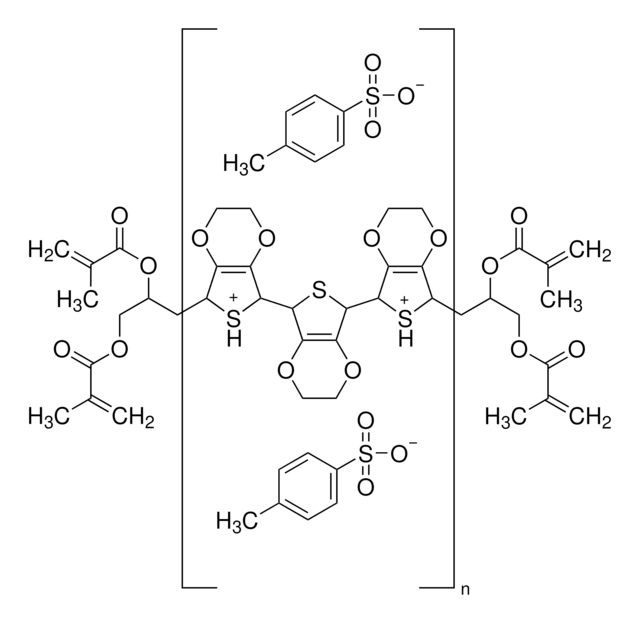560596
PEDOT:PSS
low-conductivity grade, 2.7 wt. % aqueous dispersion
Sinônimo(s):
PEDOT:PSS, Poly(2,3-dihydrothieno-1,4-dioxin)-poly(styrenesulfonate)
About This Item
Produtos recomendados
product name
Poly(3,4-ethylenedioxythiophene)-poly(styrenesulfonate), 2.7 wt % dispersion in H2O, low-conductivity grade
grau
low-conductivity grade
Nível de qualidade
composição
PEDOT content, ~0.14%
PSS content, ~2.6%
concentração
2.7 wt % dispersion in H2O
Impurezas
<300 ppm Na
tamanho de partícula
<200 nm, coeff var >95%
pH
1.2-1.8
condutividade
~1E-5 S/cm
viscosidade
<20 cP(20 °C)
temperatura de armazenamento
2-8°C
Procurando produtos similares? Visita Guia de comparação de produtos
Descrição geral
Aplicação
Características e benefícios
Embalagem
Palavra indicadora
Danger
Frases de perigo
Declarações de precaução
Classificações de perigo
Eye Dam. 1 - Skin Corr. 1
Código de classe de armazenamento
8B - Non-combustible corrosive hazardous materials
Classe de risco de água (WGK)
WGK 2
Ponto de fulgor (°F)
Not applicable
Ponto de fulgor (°C)
Not applicable
Equipamento de proteção individual
Faceshields, Gloves, Goggles, type ABEK (EN14387) respirator filter
Escolha uma das versões mais recentes:
Já possui este produto?
Encontre a documentação dos produtos que você adquiriu recentemente na biblioteca de documentos.
Os clientes também visualizaram
Artigos
Tutorial Lithography Nanopatterning at Sigma-Aldrich. Lithography, based on traditional ink-printing techniques, is a process for patterning various layers, such as conductors, semiconductors, or dielectrics, on a surface.
New conducting and semiconducting polymers for plastic electronics
Find advantages of inorganic interface layer inks for organic electronic & other applications.
Conducting polymers such as polyaniline, polythiophene and polyfluorenes are now much in the spotlight for their applications in organic electronics and optoelectronics.
Nossa equipe de cientistas tem experiência em todas as áreas de pesquisa, incluindo Life Sciences, ciência de materiais, síntese química, cromatografia, química analítica e muitas outras.
Entre em contato com a assistência técnica
